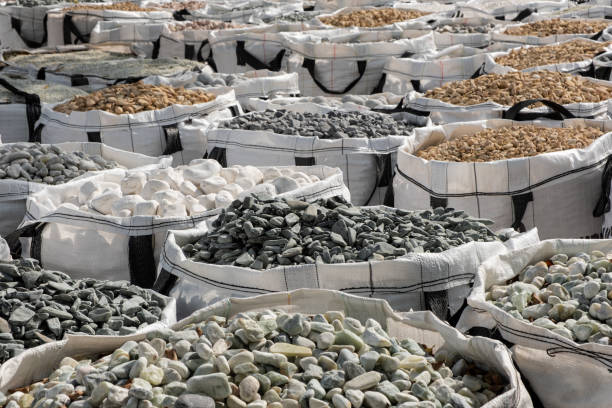When it comes to landscaping, decorative stones can make a significant impact on the overall look and feel of your outdoor space. These versatile materials not only add aesthetic appeal but also provide practical benefits such as low maintenance and durability. Whether you’re designing a serene garden, a vibrant patio, or a welcoming walkway, incorporating decorative stones can enhance the beauty and functionality of your landscape.
Why Choose Decorative Stones?
1. Aesthetic Appeal: Decorative stones come in a variety of colors, shapes, and sizes, allowing you to create a unique and personalized look for your outdoor area. From classic gravel to sleek pebbles and elegant flagstones, there’s a stone to suit every style and preference.
2. Low Maintenance: Unlike traditional grass lawns or wood mulch, decorative stones require minimal upkeep. They don’t need regular mowing, and they don’t decompose over time. This makes them a practical choice for busy homeowners or those looking to reduce garden maintenance.
3. Durability: Decorative stones are incredibly durable and can withstand harsh weather conditions, heavy foot traffic, and other environmental factors. This longevity ensures that your landscaping investment will last for years to come.
4. Versatility: Stones can be used in various landscaping applications, including paths, driveways, garden beds, and water features. Their adaptability makes them a great choice for a wide range of design projects.
5. Environmental Benefits: Using stones can help with water conservation as they reduce the need for irrigation compared to grass or other plants. Additionally, they can help with soil erosion by stabilizing the ground.
Types of Decorative Stones
1. Gravel: Gravel is a popular choice for driveways, pathways, and garden beds. Available in various sizes and colors, gravel provides excellent drainage and can be used to create a rustic or contemporary look.
2. River Rocks: River rocks are smooth, rounded stones that add a natural and elegant touch to any landscape. They are often used in dry river beds, around water features, or as a decorative border for garden beds.
3. Flagstones: Flagstones are large, flat stones used for patios, walkways, and outdoor living areas. They come in various shapes and colors and can be laid in patterns to create visually appealing surfaces.
4. Pebbles: Pebbles are small, rounded stones that work well in decorative borders, pathways, and between pavers. They add texture and color and can be used to create a polished, sophisticated look.
5. Crushed Stone: Crushed stone, often used for driveways and walkways, is made from larger stones that are crushed into smaller pieces. It’s available in various colors and sizes and provides a clean, uniform look.
Design Ideas for Decorative Stones
1. Create a Zen Garden: Use smooth river rocks and pebbles to design a tranquil Zen garden. Arrange them in patterns to represent water and incorporate them around minimalist plants and features.
2. Build a Stone Pathway: Use flagstones or stepping stones to create a beautiful and functional pathway through your garden. The stones can be laid in a pattern or randomly spaced for a more natural look.
3. Design a Rock Garden: Combine different types of stones to create a rock garden. This can include a mix of gravel, pebbles, and larger rocks, along with drought-tolerant plants.
4. Enhance a Water Feature: Surround your pond or fountain with decorative stones to create a natural and cohesive look. Choose stones that complement the colors and style of your water feature.
5. Create a Decorative Border: Use river rocks or pebbles to outline garden beds, pathways, or driveways. This adds a finished look and can help define different areas of your landscape.
Installation Tips
1. Prepare the Site: Ensure the area where you’ll be laying the stones is properly prepared. This may involve leveling the ground, removing weeds, or adding a weed barrier fabric to prevent growth through the stones.
2. Use a Base Layer: For areas with heavy foot traffic or driveways, use a base layer of crushed stone or gravel to provide stability and support before adding the decorative stones on top.
3. Proper Edging: Install edging materials to keep the stones in place and define the boundaries of your design. This helps prevent stones from spreading into other areas and keeps your landscaping looking neat.
4. Consider Drainage: Make sure your design allows for proper drainage to prevent water from pooling or causing erosion. Decorative stones can help with drainage, but ensure they’re installed in a way that promotes effective water flow.
5. Regular Maintenance: Although decorative stones are low maintenance, occasional cleaning or reapplication of stones may be needed to keep your landscape looking its best. Remove any debris or weeds that may have accumulated.
Conclusion
Decorative stones offer a range of benefits that can enhance the beauty, functionality, and sustainability of your landscape. By choosing the right type of stone and incorporating it thoughtfully into your design, you can create a stunning outdoor space that reflects your personal style and meets your practical needs. Whether you’re looking for a low-maintenance solution or a way to add elegance to your garden, decorative stones are a versatile and effective choice.


